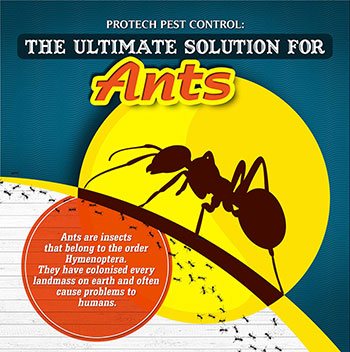The Role Of Insect Exterminators In Environmental Sustainability
The Role Of Insect Exterminators In Environmental Sustainability
Blog Article
Developed By-Nguyen Balslev
You could think that pest exterminators are only interested in removing parasites, but their function exceeds that. They play a vital component in ecological sustainability.
By using incorporated insect administration strategies, they not only remove bugs yet also safeguard biodiversity.
In addition, they utilize sustainable insect elimination methods to reduce ecological risks.
So, following time you doubt the relevance of pest exterminators, remember their contribution to a greener and healthier planet.
The Relevance of Integrated Parasite Monitoring
You must understand the value of incorporated insect management in keeping a sustainable atmosphere.
Integrated Pest Monitoring (IPM) is a technique that focuses on stopping and controlling insects while minimizing using hazardous chemicals. By executing IPM methods, you can successfully handle pest populaces without triggering damage to the setting.
One vital element of IPM is using biological controls, such as killers and parasites, to naturally manage pest populations. This lowers the requirement for chemical pesticides, which can have harmful results on wild animals and ecosystems.
In addition, IPM promotes using social and physical controls, such as plant rotation and exemption techniques, to prevent pests from ending up being an issue to begin with.
Shielding Biodiversity Through Parasite Control
We can protect biodiversity via effective bug control techniques that prioritize the preservation of natural environments. By employing accountable pest control techniques, we can secure and keep the delicate balance of types within our atmosphere. https://www.cbc.ca/player/play/2249774147816 are 3 methods which insect control contributes to protecting biodiversity:
- ** Preserving indigenous flora and animals ** - By targeting invasive types that threaten indigenous plants and animals, bug control helps ensure the survival of native varieties and preserves the natural variety of ecological communities.
- ** Avoiding the spread of diseases ** - Controlling insects such as insects and ticks decreases the threat of illness spreading to wild animals populations, safeguarding biodiversity and preventing potential episodes.
- ** Preserving jeopardized species ** - By taking care of pests that prey on or take on threatened types, parasite control efforts can boost the chances of survival and promote the recovery of prone populations.
Via responsible bug control strategies, we can proactively add to the preservation of biodiversity and the sustainability of our environment.
Mitigating Environmental Risks With Sustainable Pest Elimination Techniques
By using sustainable bug elimination approaches, you can effectively alleviate ecological threats while making sure the safety and health of both people and the all-natural ecosystem. Conventional pest control methods frequently involve using unsafe chemicals that can have detrimental results on the atmosphere.
However, lasting parasite elimination techniques concentrate on minimizing these risks by using eco-friendly choices. For example, integrated parasite monitoring (IPM) methods focus on using non-toxic and naturally degradable products, along with all-natural predators to control pest populations. This strategy not only minimizes the unfavorable impact on the atmosphere however also aids to preserve the delicate balance of the environment.
Additionally, sustainable pest elimination techniques promote the conservation of biodiversity by targeting particular insects without harming advantageous microorganisms. By adopting these techniques, you can contribute to an extra lasting and green technique to pest control.
Conclusion
You are the pest exterminator, the guardian of nature's consistency. With incorporated parasite administration, you stabilize the fragile community, ensuring the survival of diverse types.
With Gnaw marks , you minimize environmental threats, keeping the delicate equilibrium undamaged.
Like a harmony conductor, you coordinate the rhythm and flow, securing the biodiversity that dances in ideal consistency.
With every step you take, you develop a world where nature grows, where parasites pull back, and where sustainability reigns supreme.
